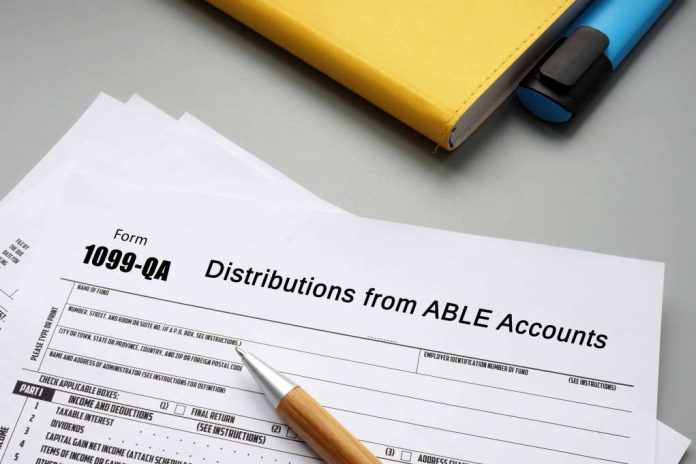There are loads of assistance options that people do not know exist. One of these options is the Achieving a Better Life Experience (ABLE) Act, which is meant to support Americans who have disabilities. This act was established in 2014 and offers people the chance to save thousands of dollars each year through a tax-deferred savings account. The savings account accepts yearly contributions that can amount to up to $16,000. Through these accounts, it will be easier for people to deal with qualifying disability costs.
What is an ABLE Account?
An ABLE account, or a 529 A account, is an account that offers people with disabilities and their household members a way to save money. The account’s beneficiary, which needs to be specified, can use the money that they saved on eligible disability costs. The Municipal Securities Rulemaking Board (MSRB) is responsible for the account’s regulation. In 2022, the annual limit for these accounts reached $16,000. However, these annual limits can vary, depending on the state. The account beneficiary, their family members, or friends can contribute after-tax funds to the ABLE account. Usually, the contributions are not considered tax deductible. On the other hand, there are states that could accept state income tax deductions.
How Do States Operate These Accounts?
States have their own version of regulations for ABLE accounts, but there is no regulation about opening an account in any state. Back then, there was a rule that declared that individuals can only open an ABLE account in the state they are living in. Fortunately, this rule expired in 2015.
In order to figure out state regulations, there is a free online tool to help you find out. The ABLE National Resource Center offers a map with each state’s ABLE programs. When you look through different states, you might find some states that offer tax benefits or charge fees, while others do not provide either. This is why it is important to compare between states to find the right state for your current situation!
ABLE Account Fees
Some states could charge fees for ABLE Accounts. Typically, states request a maintenance fee per month. On the other hand, states could offer discounts or waive fees for beneficiaries that have a certain amount in their account.
Eligibility Requirements
There are eligibility requirements that you need to meet to open an ABLE account. This is because ABLE accounts are meant to help people with disabilities. To qualify, you should meet at least one of the following requirements:
- Be eligible for Supplemental Security Income (SSI) because of a disability/blindness that began before you reached the age of 26
- Be able to receive childhood disability benefits (CDB), disability insurance benefits (DIB), or disabled widow’s/widower’s benefits (DWB) because of a disability/blindness that began before you reached the age of 26
- Have verified proof that you meet the conditions for certification of a disability before you reached the age of 26
Regardless of which requirement you meet, you will need to present evidence that you qualify. The state in which you apply for an ABLE account will decide what documents you should present. Evidence of your disability is required in all states with ABLE programs.
What If You Are Older Than 26?
If you meet other eligibility requirements, then it does not matter how old you are! In the case that you are older or younger than 26, you still might be eligible for an ABLE account.
Eligible Disabilities and Disability Costs for an ABLE Account
The disability that can qualify you could be physical, mental, developmental, and so on. The Social Security Administration’s Blue Book (Parts A and B) and SSA’s List of Compassionate Allowances Conditions can help you find out about qualifying disabilities for an ABLE account. ABLE accounts exist to provide coverage for qualifying disability expenses (QDE) that are designed to provide support to the account’s beneficiary. Some QDEs include:
- The cost of assistive technology and relevant services
- Basic living and housing costs
- Education, job training, and employment support expenses
- The expenses of services in financial management and administration
- Funeral and burial costs
- Health, prevention, and wellness expenses
- Legal costs
- Transportation expenses
Benefits of an ABLE Account
One of the greatest advantages of an ABLE account is that the first $100,000 that the account receives is not labeled as a personal asset. This is important because other programs like Supplemental Security Income (SSI), Medicaid, and housing aid focus on personal assets in their eligibility requirements. These assistance options have a restriction where recipients cannot own more than $2,000 worth of financial assets. An ABLE account, on the other hand, allows people with disabilities to own more than that $2,000 restriction.
Frequently Asked Questions
Since not everyone knows about ABLE accounts, there are likely a lot of questions involved. These accounts can be a little overwhelming to understand, but it’s quite simple. All you need is a little time and effort to research these accounts and you will figure it out!
Who is the Account Beneficiary of an ABLE Account?
The term “beneficiary” is not something you read in the newspaper every day. A beneficiary is the owner of the ABLE account who has a disability. Both “designated beneficiary” and “owner” can refer to the same person. When you compare between states to look for an ABLE account that suits you, you should remember this!
Can You Open Several ABLE Accounts?
You have the option of choosing which state you want to open an ABLE account in. However, you can only open one account. No matter which plans you decide on, you cannot open more than one ABLE account.
Is It Possible To Transfer Your Account?
Yes, it is possible to transfer your account. It’s important to note that a qualifying individual is the only person who can receive your ABLE account.
What Does “Distribution” Mean?
You probably came across the term “distribution” while you were doing your research on ABLE accounts. The money you receive from an ABLE account is referred to as a “distribution”. The money you use on qualifying disability expenses (QDE) are distributions.
What Could Happen After You Pass Away to Your ABLE Account?
When the account’s owner (a.k.a beneficiary) passes away, the money in the ABLE account can be used on QDEs such as funeral and burial expenses. However, your state will have regulations on how an account beneficiary’s passing affects the account.
Are There Different Types of ABLE Accounts?
In 2022, you can find 49 different kinds of ABLE accounts nationwide that are able to support those who are eligible!
In Conclusion
An ABLE account is a tax-deferred savings account that supports qualifying account beneficiaries. You can be eligible for an ABLE account if you meet at least one of the following requirements:
- Be eligible for Supplemental Security Income (SSI) because of a disability/blindness that began before you reached the age of 26
- Be able to receive childhood disability benefits (CDB), disability insurance benefits (DIB), or disabled widow’s/widower’s benefits (DWB) because of a disability/blindness that began before you reached the age of 26
- Have verified proof that you meet the conditions for certification of a disability before you reached the age of 26
It is important to keep in mind that each state operates differently when it comes to an ABLE account. This is why you should compare between states to find the right plan for you!














